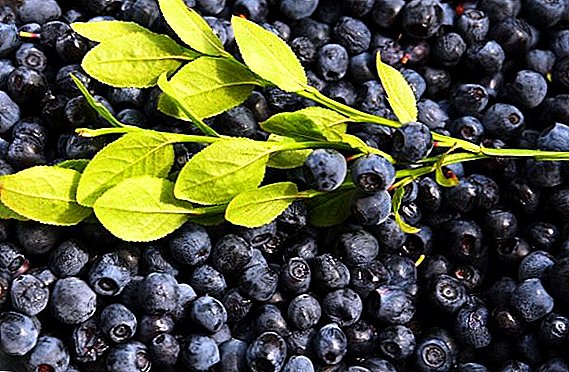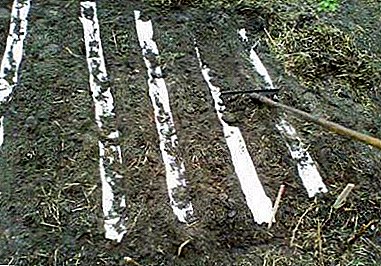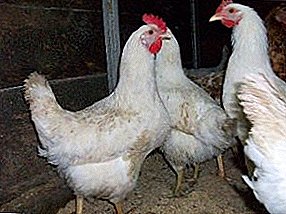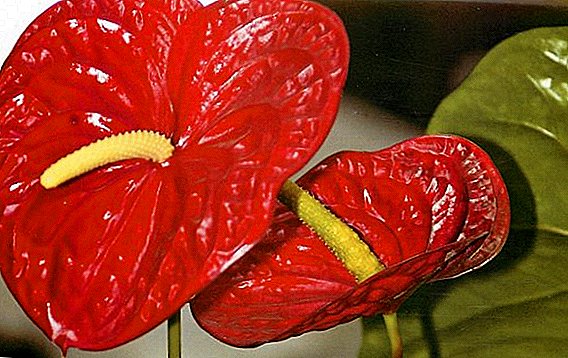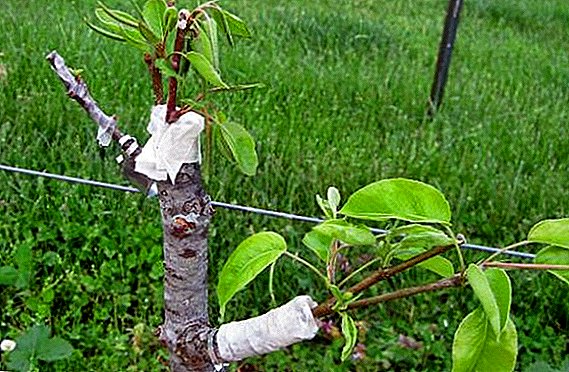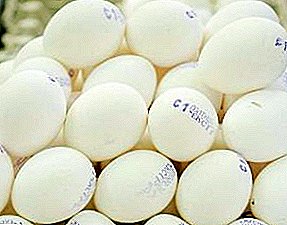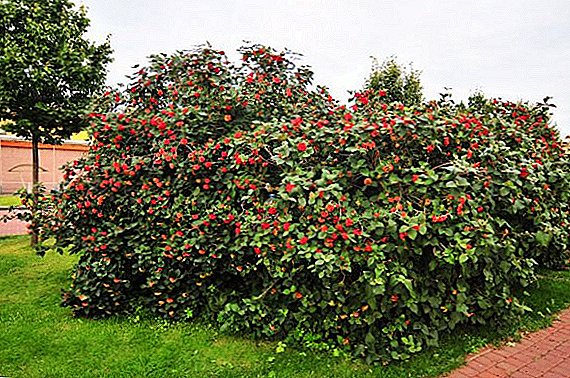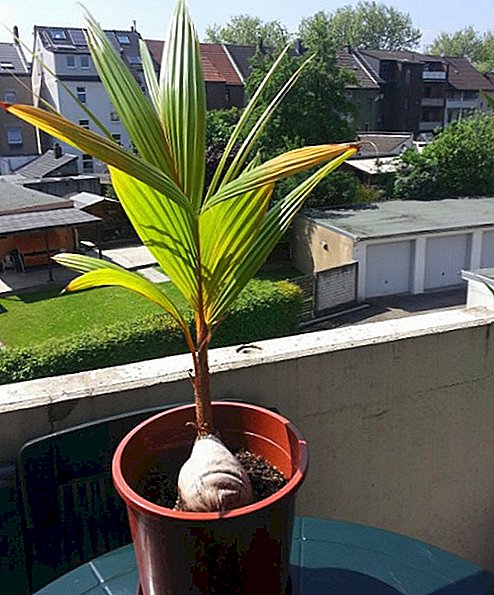 Thanks to commercials, the coconut palm has long been a symbol of heavenly delight. If you do not have the opportunity to see it personally, you can grow this tree at home. How to do it - read on.
Thanks to commercials, the coconut palm has long been a symbol of heavenly delight. If you do not have the opportunity to see it personally, you can grow this tree at home. How to do it - read on.
Coconut palm
Coconut palm tree belongs to the Palm family. This is a very high (up to 30 m) plant with a round crown formed by long (up to 6 m) leaves. The barrel in diameter reaches almost half a meter.
It blooms with almost two-meter light yellow panicles, on which the drupes are subsequently tied - fruits about 30 cm in length and up to 2.5 kg in weight, which are commonly called coconuts. The area of growth is the oceanic coasts of the tropics.
Did you know? In the Maldives, coconut palm is the official state symbol and is also depicted on the coat of arms.

Malaysia is considered the birthplace of this plant, and it is most common in Indonesia, which is the largest producer of coconuts.
Familiarize yourself with the beneficial properties of coconut, coconut milk and coconut chips.
Subspecies of coconut nut-bearing
There are several subspecies of coconut. Most often, as indoor plants can be found:
- Coco Veddel - a small palm tree, which has leaves of saturated green color, from the inside of silver, the ends are lowered down.

- Coconut (Cocos nucifera) - unlike the previous species, it is tall; it can reach 3 m indoors. The leaves are large, forked at the ends.

- Another option - Cocos nucifera viridis. Characterized by the green color of the fruit.
In height, the subspecies differ: typica (tall) and dwarf - nana.
Learn more about how to clean and clean coconut.
Training
If you decide to grow a coconut from a nut, you will need to perform the following actions:
- Choose a suitable fruit: only ripe, in no case peeled. Shake it - a splash of liquid should be heard.
- Soak the coconut for three days in water.
- Provide conditions close to greenhouses: high humidity and temperature (about +30 ° C).
 Sprouted coconut
Sprouted coconut
Planting coconut
When your nut has sprouted, it is time to plant it in the pot.
The sequence is as follows:
- Prepare the tank. It should be a wide pot in volume twice the size of a nut. Be sure to make a hole in the bottom - through it will surplus water (respectively, you need a tray).
- Lay a drainage layer on the bottom (fine clay or shards will do).
- Fill with soil mixture. The substrate must be well drained, loose. The optimal mixture - a special land for indoor plants interspersed with sand.
- Walnut half dug into the ground.
- Maintain the right temperature, humidity and light levels.
- Apply organic fertilizers and fungicides (1 time in 4 weeks).
- As the palm grows and forms, transplant it into a larger pot. At the same time, the ground around the roots must be preserved, the shells should not be removed.

Coconut palm care
Coconut palm - not the most difficult to care for the plant, but not the easiest. Beginners who previously had nothing more complicated than chlorophytum or did not grow geraniums, it most likely will not work. Although in itself the plant is quite unpretentious.
Important! Coconut palm is very sensitive to dry air and drafts. In the apartment it can not be put in the aisles and is not recommended to overdry.
Lighting
Coconut photophilous. Shadow is contraindicated, although partial shade is permissible. Best suited ambient lighting. Direct sunlight can burn a young plant, but with age it becomes resistant to their effects.
Avoid direct sunlight in the middle of the day. In order to preserve the symmetry of the crown in case of light entering from only one angle, the plant should be rotated 2 times a month. 
Required temperature
Palma loves warmth. It feels best in the temperature range from +26 to +28 ° С. Below +16 ° C ceases to grow. Short-term reductions to zero will survive, but lower - it is waiting for a guaranteed death.
We advise you to get acquainted with the list of the most popular indoor palms.
Watering palm
Plant can not be poured. The frequency of irrigation is determined by the condition of the soil and the season:
- the middle of spring and the end of summer - to prevent the soil from drying out;
- winter - water when the ground dries out.
Fertilizers
Excessive plant nutrition is not required.  You can choose from two options:
You can choose from two options:
- Once a year place granulated feed in the soil. He slowly gives away useful substances. Do it better in the spring.
- Use specialized solutions for palm trees. Frequency - 1 time in 3 weeks. Submission period - April-August.
At home, you can grow an orange tree, lemon, calamondin, pomegranate, tangerine, citron, mango, guava, papaya, coffee tree, pineapple, banana tree and feijoa.
Pruning foliage
It is necessary to cut the leaves from the palm tree, but only in two cases:
- If the leaf is completely withered.
- If the sheet is broken.
Leaves that have changed color, yellowing, do not touch to dry, coconut takes nutrients from them. Wait for complete drying, then cut. You can also trim the very tips of the leaves if they turn brown, but you don't need to touch the leaf itself. 
Transfer
Transplanted palm for several reasons. In addition, each of them has its own characteristics that are reflected in the process.
1. As growth - when the plant becomes closely in a pot.
Determined by the following features:
- stunting;
- stagnant water on the surface;
- sticking roots.
Young palm trees are transplanted once a year in April, large - once in 2-3 years. The procedure is standard: the plant, together with a lump of earth on the root system, is transferred into a larger pot (15-20% more than the previous one).
Important! During transshipment, it is absolutely impossible to bury the plant and damage the trunk, otherwise the palm tree may die.
Video: Coconut Transplant
2. To replace the soil - if the substrate is old and / or deteriorated. Determined by the following features:
- white plaque on the ground;
- bad smell;
- the water got worse absorbed.
In this case, you need to transplant in a pot of similar size (you can in the same, after washing it).
3. If the palm tree rots. It looks like this:
- the trunk is easily loosened;
- the soil is constantly wet, emits an unpleasant smell.
In this case, in the process of transplanting should also cut rotten roots. 
Propagation of coconut palm
Coconut breeds in two ways:
- From the drupe (walnut). Only one plant germinates. This is the main breeding method.
- Scions. It is rare, only in the case of the appearance in the adult tree of the child process.
Coconut palm pests and diseases
In indoor plants, the risk of disease or pest damage is lower than in outdoor plants, but it does. Below are the most common problems that the owner of a palm tree may encounter.
Pests
The list of pests that can infect a coconut is fairly standard. It is they who most often get turned on indoor plants.
These include:
- mealybug;

- scale insects and false shields;
Did you know? Coconut palms are great travelers, they perfectly survive in terrible conditions for other plants. Their fruits overcome many thousands of kilometers of ocean water, and after they are nailed to the shore, they take root and grow practically on the sand, under the scorching rays of the sun, absorbing salt water.
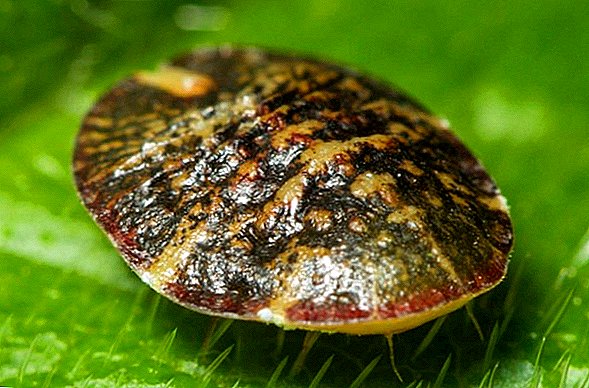
- spider mite;

It will be useful for you to get acquainted with the types of spider mites.
- bubbly (thrips).
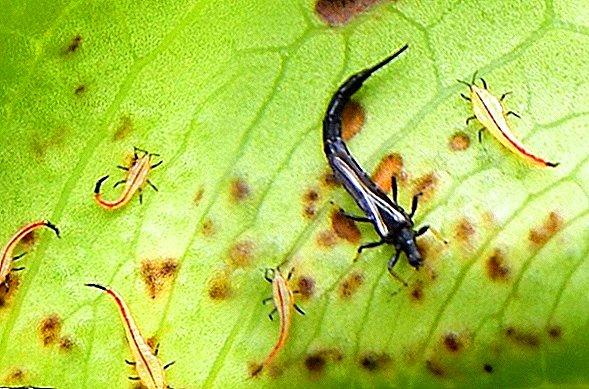
All of them are exterminated by special preparations (insecticides). Before buying a product, be sure to check whether it is suitable for use in a residential area.
Diseases
There are few illnesses in coconut palms, but they are very serious:
- Phytoplasma infection. External manifestations - crown turns yellow upwards. Unfortunately, to cure the plant will not succeed, you have to throw it away.
- Black and pink rot (defeat by spores). The plant is weakened, rotting shoots, leaves, sometimes the trunk. There are observed (depending on the type of infection) putrefactive mass of dark brown, black or pink flowers. The plant is treated with fungicides: treatment 1 time in 7 days, until complete recovery.
As you can see, growing your own coconut palm is a rather laborious task, although very interesting. If you succeed in this, you can enjoy your own paradise in your own home. 
Reviews from the network











